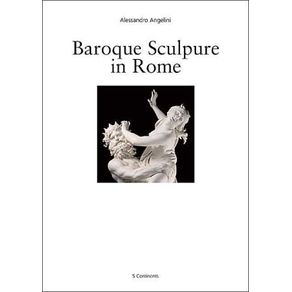The notion of Baroque is to many almost inseparable from the name of Gianlorenzo Bernini, the genius of seventeenth-century sculpture in Rome, in work such as the Fountain of the Four Rivers or the Ecstasy of St Teresa. Bernini's impact on the sculpture and art of his time was indeed decisive, but this supremacy only prevailed in the late seventeenth century and was not absolute. Other great sculptors, often with quite different personalities, contributed to the extraordinary, multi-faceted statuary of Rome. Baroque Sculpture in Rome presents these various tendencies in a unique phase of Italian figurative art chronologically, clearly and accessibly illustrating their development. It starts with early seventeenth century sculpture, featuring a series of highly contrasting personalities and a particularly cosmopolitan spirit, then focuses on great masters such as Bernini, Alessandro Algardi and Francois Duquesnoy. Their new approach to the antique went hand-in-hand with a strong use ofVenetian-derived colour, stunning original effects and sublime accents. The book avoids catch-all, text-book terms such as 'classicism' and 'baroque', which portray the period's artistic personalities and trends as fossilised and entirely separate from one another. In line with the latest historiographical approaches, it also examines workshop relationships between the great masters and the so-called 'youths' - pupils or occasional associates. Various artistic personalities emerge, such as the experimental temperaments of Melchiorre Caffa and Antonio Raggi, and Ercole Ferrata's ability to balance and blend the most varied trends. Overall, readers will see how, over a century, marble and travertine were used to create a huge range of statuary throughout the city, signalling a new identity for modern Rome.



